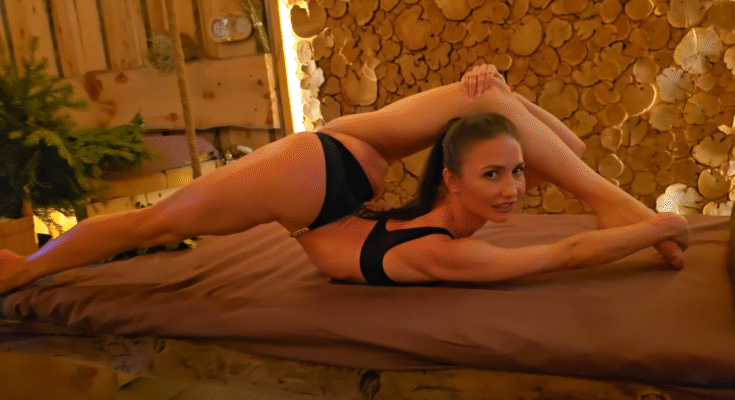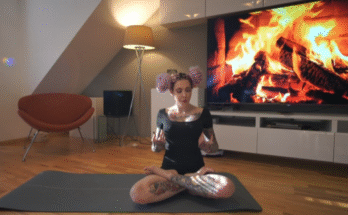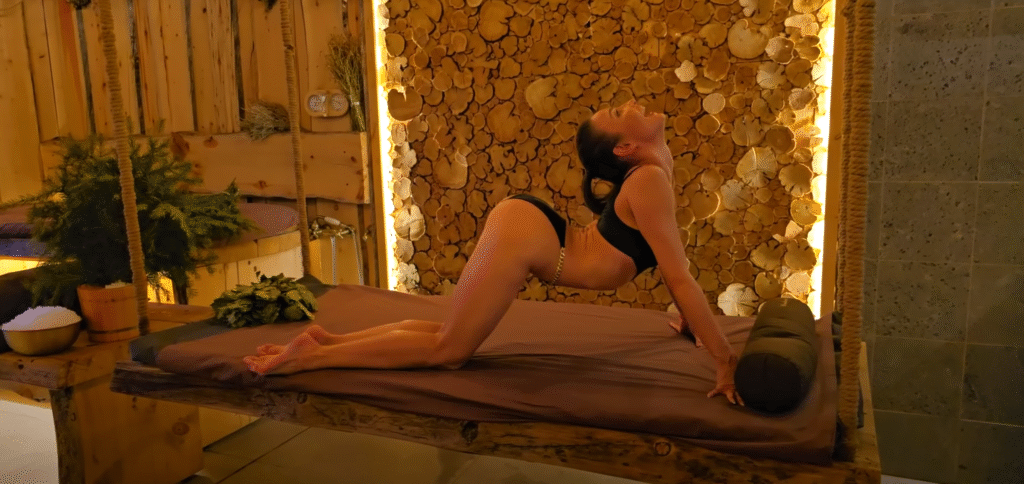
Contortion has always fascinated audiences. The incredible ability of the human body to twist, bend, and stretch beyond what seems possible is both an art and a discipline. Among the most breathtaking elements in any contortion performance are oversplits and backbends. These two movements showcase not only extreme flexibility but also strength, control, and artistry. When combined in a routine, they create a performance that is truly unforgettable.
In this article, we’ll explore what oversplits and backbends are, how performers train for them, their challenges, and why they remain at the core of the ultimate contortion performance.
What Are Oversplits?
A split is when the legs are extended in opposite directions until they form a straight line of 180 degrees. An oversplit goes beyond this—stretching the legs past the straight line, often with the help of props like yoga blocks, chairs, or elevated surfaces.
There are different types of oversplits:
- Front Oversplit: One leg forward, one leg back, extending past 180 degrees.
- Middle Oversplit: Both legs stretched out to the sides, opening wider than a flat split.
- Elevated Oversplit: One or both legs placed on a higher surface for dramatic effect.
Oversplits are considered one of the ultimate tests of lower body flexibility. They demand open hips, stretched hamstrings, and strong supporting muscles to protect the joints.
What Are Backbends?
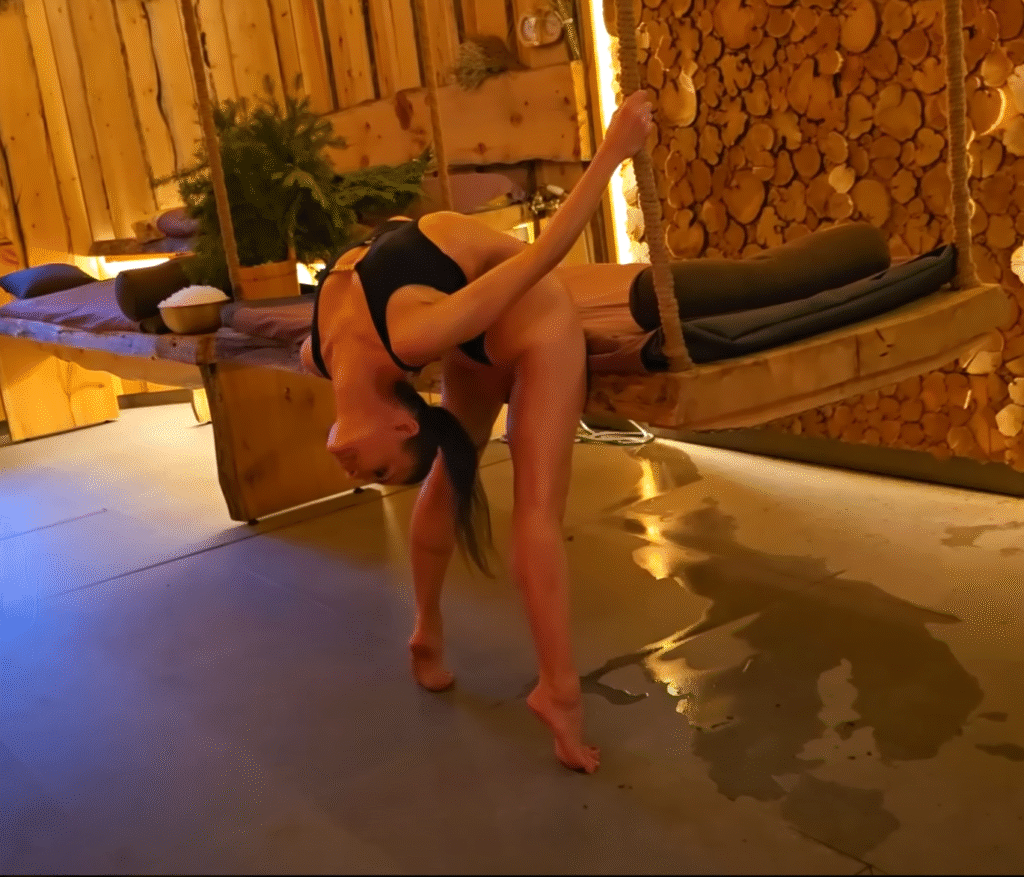
A backbend is any movement that arches the spine backward, creating a dramatic curve. In contortion, backbends range from simple bridges to extreme chest-to-feet poses.
Some common variations include:
- Bridge Pose: Hands and feet on the ground, arching the back.
- Chest Stand: Balancing on the chest while the legs bend over the head to touch the floor.
- Scorpion Pose: Inversions where the legs curve overhead in a deep arch.
- Needle Pose: One leg stretched vertically overhead while balancing on the other leg.
Backbends require not only spine flexibility but also open shoulders, strong legs, and core stability.
Why Oversplits and Backbends Are Core to Contortion
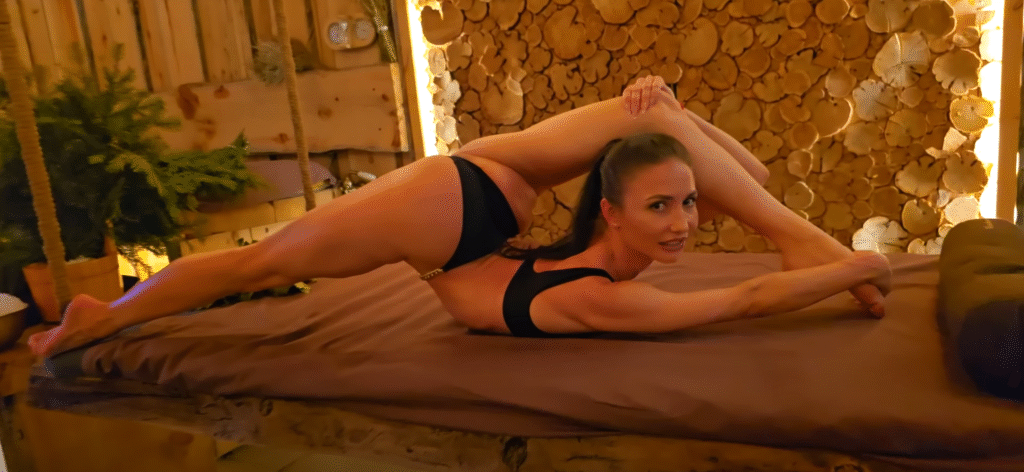
The combination of oversplits and backbends creates a performance that is both powerful and graceful. Oversplits show mastery of hip and leg flexibility, while backbends highlight spinal mobility and total-body control.
Together, they demonstrate:
- Extreme Range of Motion: These movements go beyond what most people imagine the human body can do.
- Strength and Stability: Contrary to appearances, contortionists are not just “bendy”—they are incredibly strong, supporting their bodies in challenging positions.
- Artistic Expression: Oversplits and backbends can be shaped into beautiful lines, making them visually stunning.
- Dramatic Effect: These poses often serve as the climax in performances, leaving audiences gasping in amazement.
Training for Oversplits
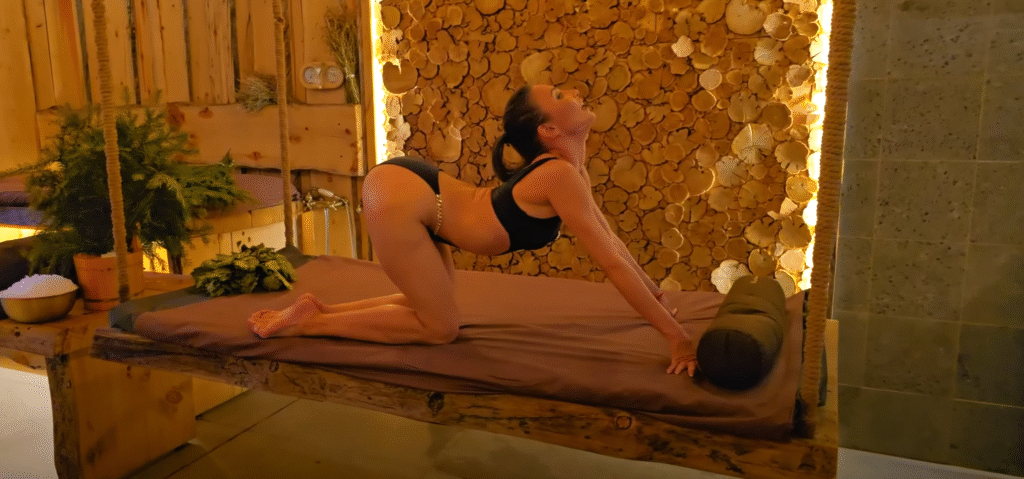
Achieving oversplits is not something that happens overnight. Contortionists spend years conditioning their bodies. Some key elements include:
- Dynamic Warm-Ups: Leg swings, lunges, and mobility drills to prepare the hips.
- Progressive Stretching: Gradually increasing depth of splits with props.
- Strength Training: Strengthening glutes, hamstrings, and quads to protect joints.
- Consistency: Daily practice is essential for progress and maintenance.
A safe approach to oversplits is crucial. Pushing too hard too quickly can lead to injuries in the hamstrings, groin, or knees. Contortionists know that patience is part of the art.
Training for Backbends
Backbends demand just as much preparation as oversplits. Contortionists train by:
- Opening the Shoulders: Using stretches like puppy pose or overhead wall stretches.
- Strengthening the Core and Back: To provide support in deep arches.
- Practicing Progressive Backbends: Starting from bridges and working toward deeper poses.
- Improving Breath Control: Breathing calmly while the chest and abdomen stretch.
One of the most difficult aspects of backbend training is overcoming fear. Extreme backbends can feel vulnerable, but with control and awareness, performers make them look effortless.
Combining Oversplits and Backbends
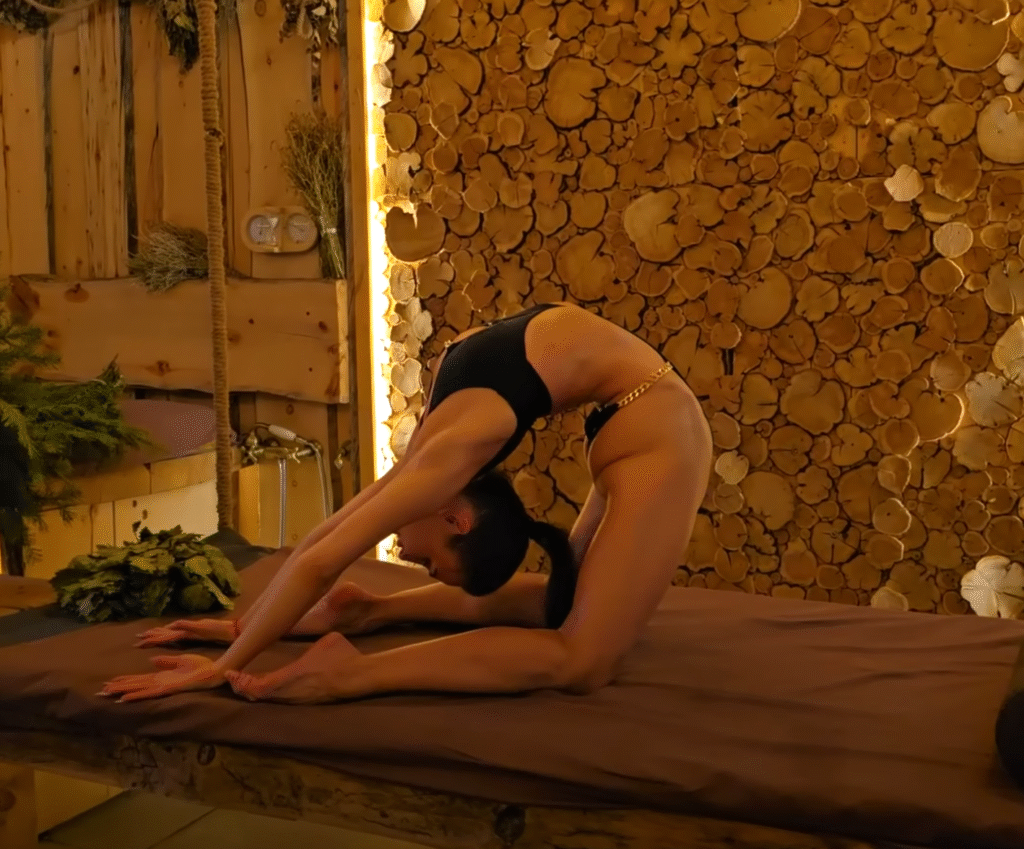
When combined in choreography, oversplits and backbends create an incredible visual flow. Some examples include:
- Oversplit Handstands: Balancing on the hands while extending legs past 180 degrees.
- Backbend into Oversplit: Transitioning from a deep bridge into a front oversplit.
- Split Backbend Drop: Falling gracefully from standing into a split backbend.
- Needle Oversplits: One leg pulled into a vertical line while arching the spine backward.
These transitions showcase both flexibility and control. A contortionist is not just showing range of motion, but also artistry in the way they move from one extreme shape to another.
Challenges in Oversplits and Backbends
While these moves are mesmerizing, they are also extremely challenging. Some of the main difficulties include:
- Injury Risk: Overstretching can strain ligaments and muscles.
- Balance: Many advanced variations require holding poses upside down or on one leg.
- Endurance: Performers often hold these poses for long periods under stage lights.
- Precision: Lines must be clean—every degree of extension matters.
- Performance Pressure: Beyond physical ability, a contortionist must look calm, graceful, and artistic while pushing their body to its limits.
The Artistry of Performance
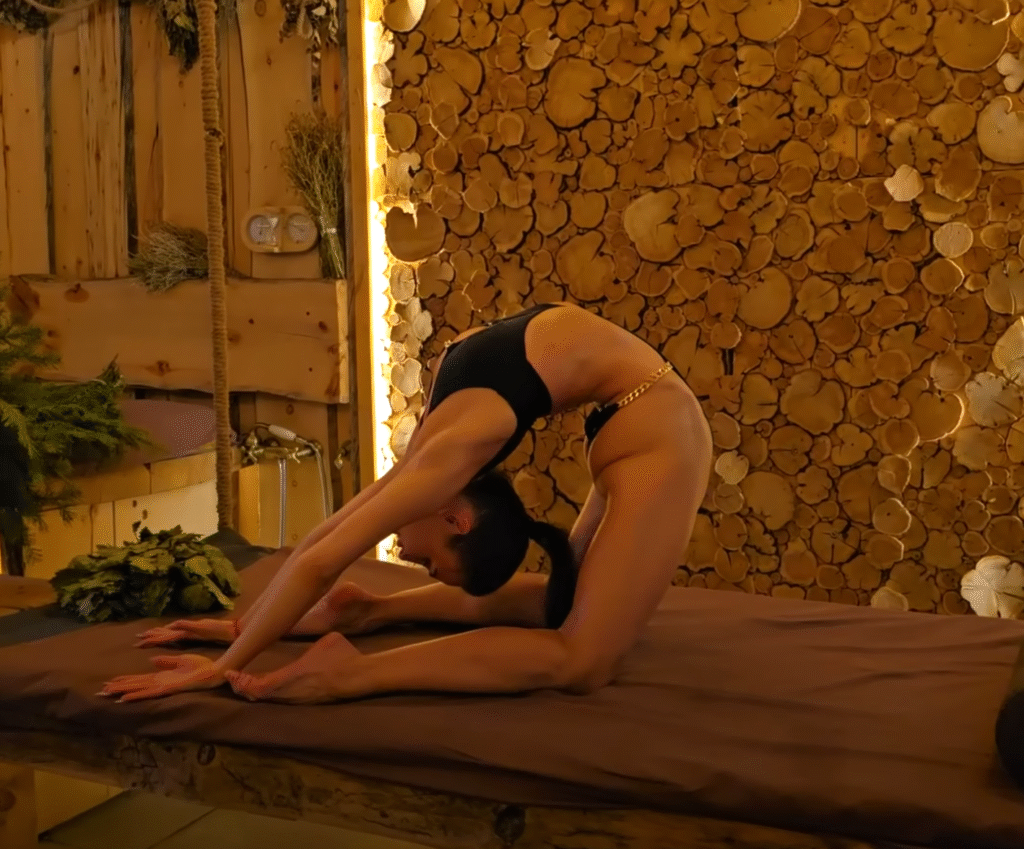
What makes oversplits and backbends so stunning is not just the physical achievement, but also the artistry. Lighting, music, costume, and choreography all enhance the performance. A contortionist might bend into a perfect oversplit while holding a serene expression, or move from a deep backbend into a flowing dance movement.
It’s not only about what the body does—it’s how the audience feels watching it. Awe, surprise, and admiration are the emotions that these performances aim to evoke.
Famous Contortionists and Their Mastery
Across the world, contortionists from circuses, dance companies, and solo acts have stunned audiences with their oversplits and backbends. Cirque du Soleil, for example, is renowned for featuring contortion acts that combine these elements with acrobatics and theatrical storytelling.
Social media has also given rise to many young performers who showcase their extreme flexibility online, inspiring new generations to pursue contortion as both sport and art.
Oversplits & Backbends as Inspiration
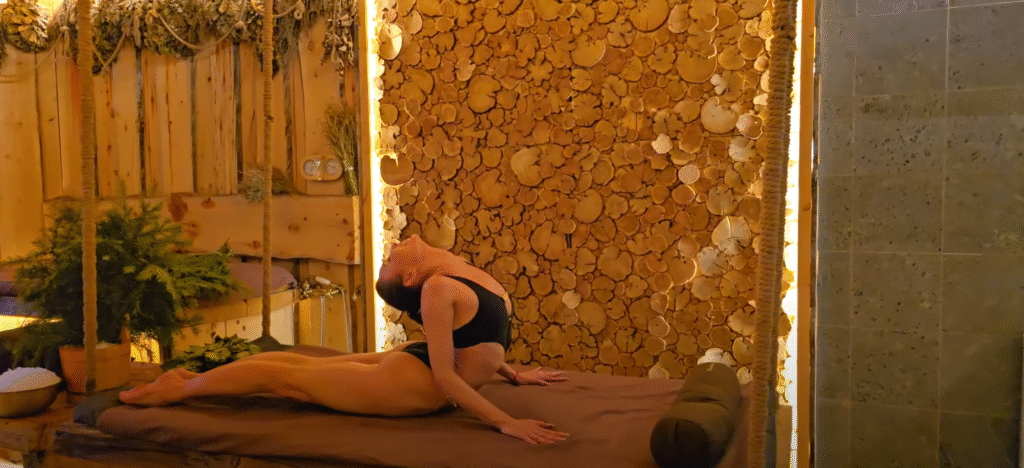
Even if you’re not a contortionist, oversplits and backbends can serve as inspiration. They remind us of the incredible adaptability of the human body, and the beauty of dedication, practice, and self-expression. While most people won’t achieve extreme oversplits or chest-to-feet backbends, gentle stretches and basic yoga poses can improve flexibility, mobility, and posture.
These movements encourage us to appreciate our bodies—not just for what they can do now, but for how much they can grow with patience and care.
Conclusion
Oversplits and backbends are at the heart of contortion, representing the ultimate performance of flexibility, strength, and artistry. They push the boundaries of what the body can achieve while captivating audiences worldwide.
Behind every breathtaking pose lies years of disciplined training, deep awareness of body mechanics, and the courage to perform under pressure. For contortionists, oversplits and backbends are not just movements—they are a language of expression, a dance between strength and flexibility, and a way to leave audiences in awe.
Whether on stage under dazzling lights or in a quiet practice space, the combination of oversplits and backbends remains one of the most mesmerizing forms of human expression—the ultimate contortion performance.
